 If you were a horror fan in the 1980s and early-to-mid 90s you probably remember Zebra Books. You may not have actually read any Zebra paperbacks, but the packaging was impossible to ignore.
If you were a horror fan in the 1980s and early-to-mid 90s you probably remember Zebra Books. You may not have actually read any Zebra paperbacks, but the packaging was impossible to ignore.
In describing Zebra books lurid and garish are the adjectives that spring to mind, with outrageously trashy cover art that favored skeletons, demonic children and creepy dolls. Those illustrations didn’t always match the content of the books they adorned, but that content was rarely ever worth mentioning. You might say Zebra exemplified everything wrong with the horror fiction boom of the eighties, although these days the inevitable nostalgia factor has set in. If nothing else, the Zebra horror line was most definitely a product of its time, a phenomenon that could assuredly never happen today.
Zebra was the flagship imprint of the staunchly independent Kensington Publishing, initiated in 1974. One of Zebra’s first-ever 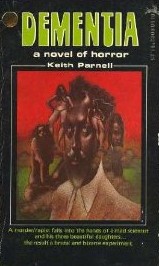 horror publications was DEMENTIA by Keith Parnell, a book notable for its trashy cover art, grammatically incorrect tagline (“A murder/rapist falls into the hands of a mad scientist and his three beautiful daughters…the result a brutal and bizarre experiment”), typesetting that appeared as if it was done by a drunken epileptic, and content that was negligible at best. 1974 also saw Zebra’s publication of THE WILD WHITE WITCH by Peter Stafford, which at least had a tagline that made sense; unfortunately that’s about all the book had going for it.
horror publications was DEMENTIA by Keith Parnell, a book notable for its trashy cover art, grammatically incorrect tagline (“A murder/rapist falls into the hands of a mad scientist and his three beautiful daughters…the result a brutal and bizarre experiment”), typesetting that appeared as if it was done by a drunken epileptic, and content that was negligible at best. 1974 also saw Zebra’s publication of THE WILD WHITE WITCH by Peter Stafford, which at least had a tagline that made sense; unfortunately that’s about all the book had going for it.
Zebra’s subsequent seventies-era horror publications were rather more interesting. These included reprints of classic novels and stories by H.P. Lovecraft (THE COLOR OUT OF SPACE), Robert E. Howard (PIGEONS FROM HELL), Bram Stoker (THE JEWEL OF THE SEVEN STARS, THE LAIR OF THE WHITE WORM) and Frank Belknap Long (NIGHT FEAR). There was also John Shirley’s clumsy but promising DRACULA IN LOVE, Robert Bloch’s THERE IS A SERPENT IN EDEN and Ken Greenhall’s HELL HOUND, which despite its misleading red-eyed dog cover and poorly chosen moniker (it was published elsewhere as BAXTER) is to these eyes an eccentric masterpiece.
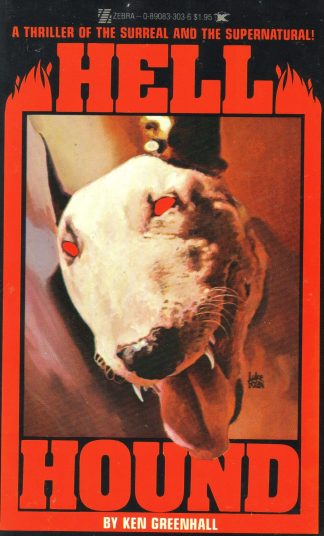 That last point brings up the fact that Zebra was uniquely qualified to provide an outlet for worthy fiction ignored by the major publishers. That was the case with HELL HOUND, but one is hard-pressed to find too many other examples. Certainly the majority of Zebra’s output would indeed have been shunned by major publishers, and with good reason.
That last point brings up the fact that Zebra was uniquely qualified to provide an outlet for worthy fiction ignored by the major publishers. That was the case with HELL HOUND, but one is hard-pressed to find too many other examples. Certainly the majority of Zebra’s output would indeed have been shunned by major publishers, and with good reason.
It was in the early 1980s that Zebra’s horror line really came into its own, starting with the premiere novel by the man who would become its star writer. That writer was William W. Johnstone and the novel was the notorious 1980 trash fest THE DEVIL’S KISS, which appeared with the type of garish cover art (depicting a glowering demon and a creepy doll) that would come to typify Zebra’s books. The prolific Johnstone would go on to write (or at least be credited with) nearly 200 subsequent novels for Zebra, spanning a multitude of genres. Of Johnstone’s horror output the standouts in my view are THE DEVIL’S HEART and THE DEVIL’S TOUCH (his follow-ups to THE DEVIL’S KISS), and 1983’s THE NURSERY, the literary equivalent of the outrageous Christian scare films of Ron Ormond and others.
With 1980’s MOONDEATH Rick Hautala, another Zebra regular, got his start—and, in a rarity for Zebra, actually turned out some damn good books. J.N. Williamson started his Zebra tenure a year later with DEATH-COACH, and Ruby Jean Jensen with 1985’s HOME SWEET HOME. Other eighties-era Zebra mainstays included Jack Martin (a.k.a. Dennis Etchison, whose pseudonymous movie novelizations were published by Zebra), a young Edward Lee, Pat Graversen, Stephen Gresham, Stephen R. George and Andrew Neiderman.
Joe Lansdale published his first novel ACT OF LOVE with Zebra, although he didn’t stick around. The same was true of 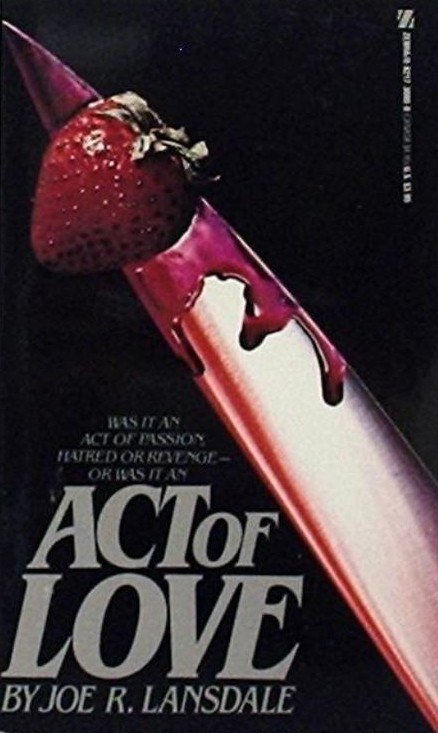 Bentley Little (who published 1993’s THE SUMMONING with Zebra but, speaking about his follow-up THE IGNORED, claimed “I could have gone back to Zebra, but I thought the novel deserved better”), Claude Teweles (whose THE STALKER was a pretty decent novel that didn’t deserve the Zebra treatment), Richard Setlowe (whose 1980 hardcover THE EXPERIMENT appeared as a Zebra paperback in ‘86) and Davis Grubb (whose 1982 novel ANCIENT LIGHTS was Zebra-ized 10 years later).
Bentley Little (who published 1993’s THE SUMMONING with Zebra but, speaking about his follow-up THE IGNORED, claimed “I could have gone back to Zebra, but I thought the novel deserved better”), Claude Teweles (whose THE STALKER was a pretty decent novel that didn’t deserve the Zebra treatment), Richard Setlowe (whose 1980 hardcover THE EXPERIMENT appeared as a Zebra paperback in ‘86) and Davis Grubb (whose 1982 novel ANCIENT LIGHTS was Zebra-ized 10 years later).
A turning point in Zebra’s reign came with the publication of Rick Hautala’s NIGHT STONE, which contained a hologram of a little girl’s face that morphed into a skull. Never mind that the cover, as usual with Zebra, was largely incidental to NIGHT STONE’S plot—Hautala opined that Zebra’s honchos “didn’t give a rat’s ass what was beneath their hologram cover”—as the book sold like the proverbial hotcakes. Hautala’s LITTLE BROTHERS was supposed to get a deluxe full cover hologram, but when the author elected to take a lucrative offer from a competing publisher Zebra lavished that hologram on HOUSE OF ILLUSIONS, penned by the more convivial Ruby Jean Jensen.
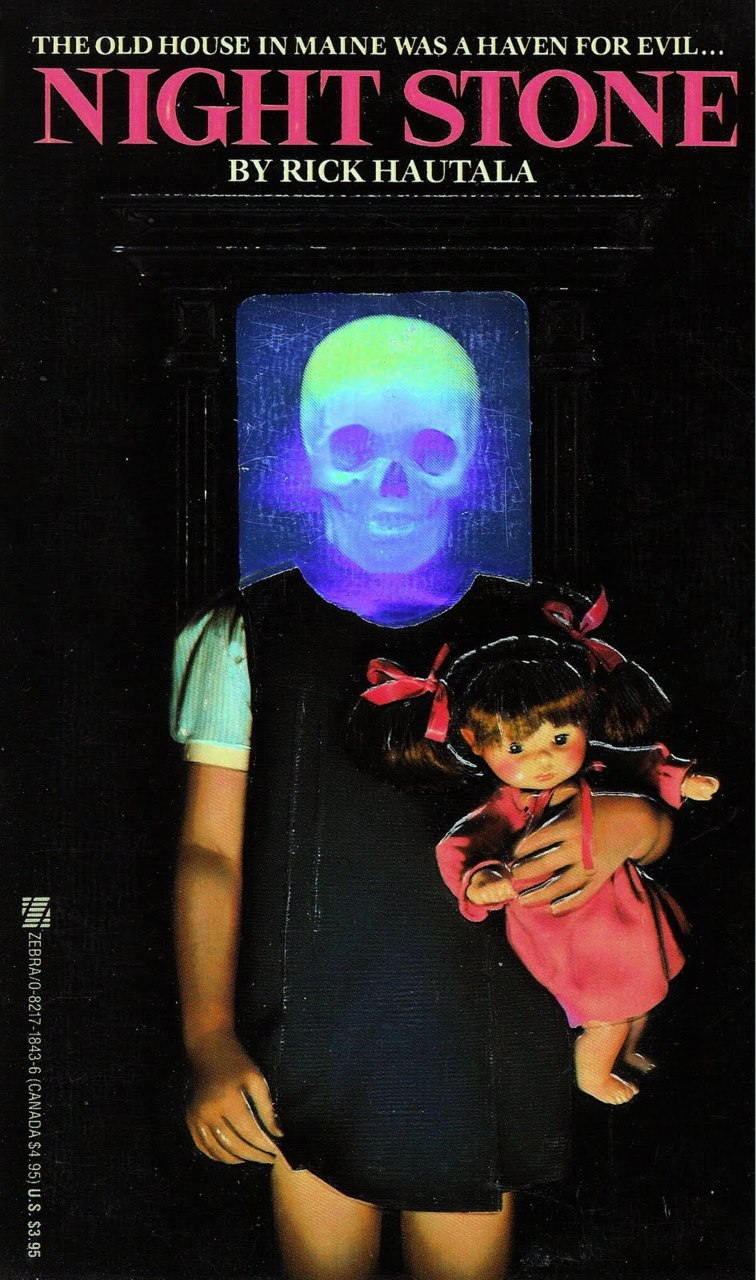 Such gimmicks may have garnered a fair amount of publicity, but they did nothing to improve Zebra’s reputation. As I understand it, by the late eighties Zebra had become known in horror circles as the publisher of last resort for writers who couldn’t get their novels accepted anywhere else.
Such gimmicks may have garnered a fair amount of publicity, but they did nothing to improve Zebra’s reputation. As I understand it, by the late eighties Zebra had become known in horror circles as the publisher of last resort for writers who couldn’t get their novels accepted anywhere else.
Yet Zebra soldiered on, entering the nineties with its usual prolific output and a new stable of “star” writers, including C. Dean Andersson, Ronald Kelly, James Kisner, Guy N. Smith and Richard Laymon (two of whose novels appeared in Zebra editions). There were even a few bestsellers among that later crop, most notably Andersson’s I AM DRACULA. All things, however, must come to an end, and Zebra discontinued its horror line in October of 1996.
‘96 is often cited as the year the literary horror market crashed, a calamity that could be foreseen far in advance. As one blogger has perceptively noted, “a surfeit of mass produced, generic tales of possessed children, vengeful ghosts, and small town horrors led to a major downturn (in the horror market) during the late 1980s.” The above accurately describes the majority of Zebra’s horror output.
Another factor that contributed to the downturn was the early nineties collapse of drug/grocery store rack distribution. This had an incalculable impact on horror publishing as a whole (during the eighties I was introduced to quite a few seminal novels and writers through the racks of my local Sav-On), and especially on a publisher like Zebra, which relied almost entirely on garish cover art to attract buyers.
Some of Zebra’s stable of authors survived the crash of ‘96 with minimal wear, such as Rick Hautala, Edward Lee and William 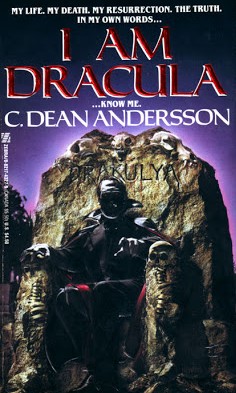 Johnstone (who ground out a succession of western potboilers that continues today—a pretty impressive feat considering Mr. Johnstone died in 2004). Others were more indelibly impacted, such as Ronald Kelly, who after Zebra’s collapse stopped writing for nearly ten years, and also Ruby Jean Jensen, whose final novel was published in 1995 (she died in 2010).
Johnstone (who ground out a succession of western potboilers that continues today—a pretty impressive feat considering Mr. Johnstone died in 2004). Others were more indelibly impacted, such as Ronald Kelly, who after Zebra’s collapse stopped writing for nearly ten years, and also Ruby Jean Jensen, whose final novel was published in 1995 (she died in 2010).
Today Zebra and its parent company Kensington are still going strong, putting out a steady glut of romance and western paperbacks. According to its website, Kensington currently accounts for around 7% of all paperback sales in the United States. Yet to many of us the company will never be the same without Zebra’s magnificently trashy horror line, even though, regarding the demise of that line, it’s a plain fact that Zebra had only itself to blame.
